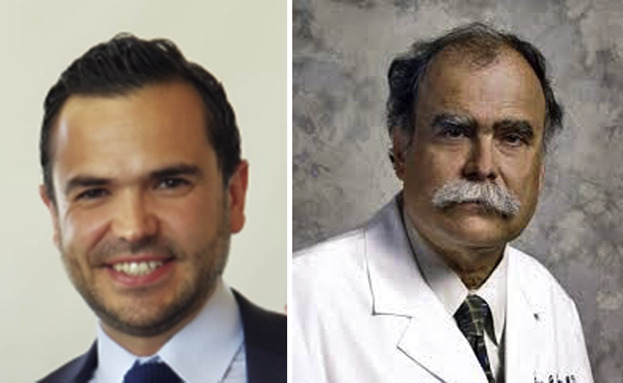
Camilo A. Gomez, MD, and Tomas A. Salerno, MD
Central Message.
COVID-19 has caused a paradigm shift in referrals, volumes, and cardiac procedures that favors interventional procedures for CAD and TAVR for aortic valve diseases.
See Article page 893.
The coronavirus 2019 (COVID-19) pandemic profoundly affected the US health care system, leading to drastic changes in workflow to meet the challenges of the pandemic. According to the American Hospital Association, the pandemic resulted in a total 4-month financial impact of $202.6 billion in losses for America's hospitals and health systems, or an average of $50.7 billion per month.1 Ad and colleagues,2 in the first article of its kind, deal with the North American cardiac surgery experience during the era of COVID-19. They demonstrate a decrease of 45% in baseline cardiac surgery case volumes. This is independent of the institutional COVID-19 burden and deferral of nonurgent operations, which is consistent with task force and society guidance statements.2 The importance and significance of the data presented in this article should be highlighted because they should not be interpreted as reflecting the impact of the decrease in operations seen by most other medical specialties. In general, elective procedures experienced abysmal decreases in volumes. In contrast, the critical role that cardiac surgery plays in the medical field was affected mainly due to its resource-intensive need for critical care and facilities. Furthermore, cardiac surgery is directly affected by the workflow of medical cardiovascular services because it is the final predator in a long food chain that makes the specialty vulnerable. Noninvasive and invasive cardiac services also experienced marked decrease in volumes that, in turn, affected cardiac surgery referrals.3 , 4 Moreover, as mentioned by Ad and colleagues2 and data from other reports, patients are reluctant to seek medical care, leading to dramatic reduction in patients presenting to hospitals with myocardial infarction.3, 4, 5
Is cardiac surgery facing temporary or permanent changes in its operations? The health care system must have capability to provide high quality treatments to patients requiring cardiac care while meeting patients' expectations of short hospital stays to decrease their risk of exposure to COVID-19. Additionally, there is an imperative necessity to satisfy the health system current needs for intelligent and strategic allocation of resources. Favoring less-invasive and lower-cost procedures avoids intensive care unit stays and shortens hospitalizations. Now more than ever, heart teams should play a critical role in the comprehensive assessment of patients with the goal of accomplishing those demands. This can be the case in patients with advanced coronary artery disease where procedures, like multivessel or high-risk percutaneous coronary artery intervention, can safely fulfill those needs.6 Also, in regard to aortic valves, there is shift toward transcatheter aortic valve replacement in all risk populations.7 These arguments weight in favor of minimally invasive procedures with rapid recovery and lower costs.
Does this signal a new normal for cardiac surgery in some areas? Time will tell, and this important article by Ad and colleagues2 is the first, of many more to come, depicting the venue.
Footnotes
Disclosures: The authors reported no conflicts of interest.
The Journal policy requires editors and reviewers to disclose conflicts of interest and to decline handling or reviewing manuscripts for which they may have a conflict of interest. The editors and reviewers of this article have no conflicts of interest.
References
- 1.American Hospital Association Hospitals and health systems face unprecedented financial pressures due to COVID-19. https://www.aha.org/guidesreports/2020-05-05-hospitals-and-health-systems-face-unprecedented-financial-pressures-due#:∼:text=The%20AHA%20estimates%20the%20net,treating%20COVID%2D19%20patients%20alone Available at:
- 2.Ad N., Luc J.G.Y., Nguyen T.C., the COVID-19 North American Cardiac Surgery Survey Working Group Cardiac surgery in North America and coronavirus disease 2019 (COVID-19): regional variability in burden and impact. J Thorac Cardiovasc Surg. 2021;162:893–903.e4. doi: 10.1016/j.jtcvs.2020.06.077. [DOI] [PMC free article] [PubMed] [Google Scholar]
- 3.Roffi M., Capodanno D., Windecker S., Baumbach A., Dudek D. Impact of the COVID-19 pandemic on interventional cardiology practice: results of the EAPCI survey. EuroIntervention. 2020;16:247–250. doi: 10.4244/EIJ-D-20-00528. [DOI] [PubMed] [Google Scholar]
- 4.Tanner R., MacDaragh Ryan P., Caplice N.M. COVID-19 - Where have all the STEMIs gone? Can J Cardiol. 2020;36:1161.e9–1161.e10. doi: 10.1016/j.cjca.2020.04.032. [DOI] [PMC free article] [PubMed] [Google Scholar]
- 5.Garcia S., Albaghdadi M.S., Meraj P.M., Schmidt C., Garberich R., Jaffer F.A., et al. Reduction in ST-segment elevation cardiac catheterization laboratory activations in the United States during COVID-19 pandemic. 2020;75:2871–2872. doi: 10.1016/j.jacc.2020.04.011. [DOI] [PMC free article] [PubMed] [Google Scholar]
- 6.Kornowski R. Shifting paradigms in cardiovascular therapeutic strategies during the COVID-19 era. JACC Cardiovasc Interv. May 19, 2020 doi: 10.1016/j.jcin.2020.05.028. [Epub ahead of print] [DOI] [PMC free article] [PubMed] [Google Scholar]
- 7.Tanguturi V.K., Lindman B.R., Pibarot P., Passeri J.J., Kapadia S., Mack M.J., et al. Managing severe aortic stenosis in the COVID-19 era. JACC Cardiovasc Interv. June 1, 2020 doi: 10.1016/j.jcin.2020.05.045. [Epub ahead of print] [DOI] [PMC free article] [PubMed] [Google Scholar]


